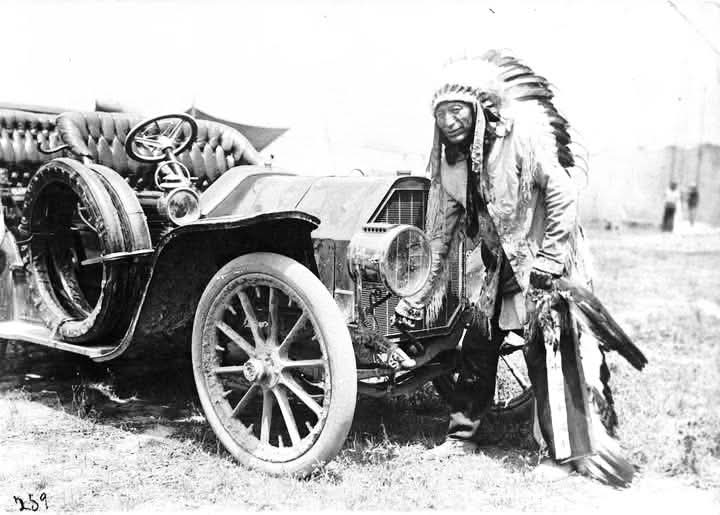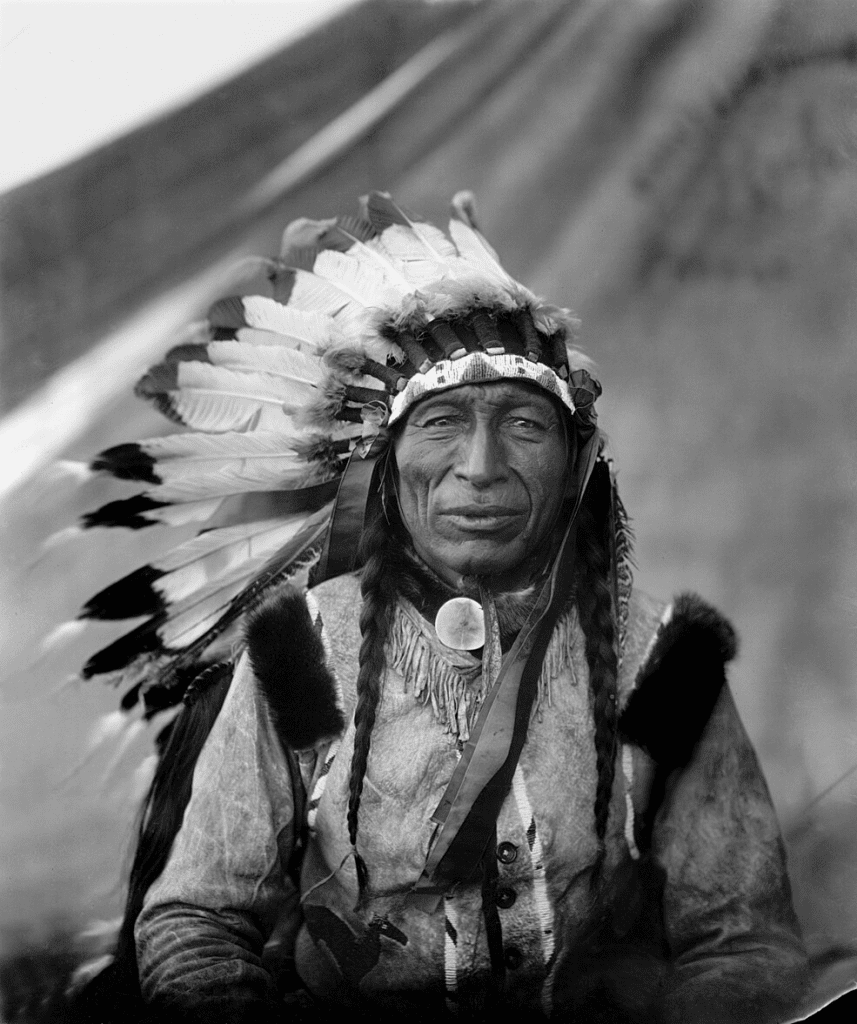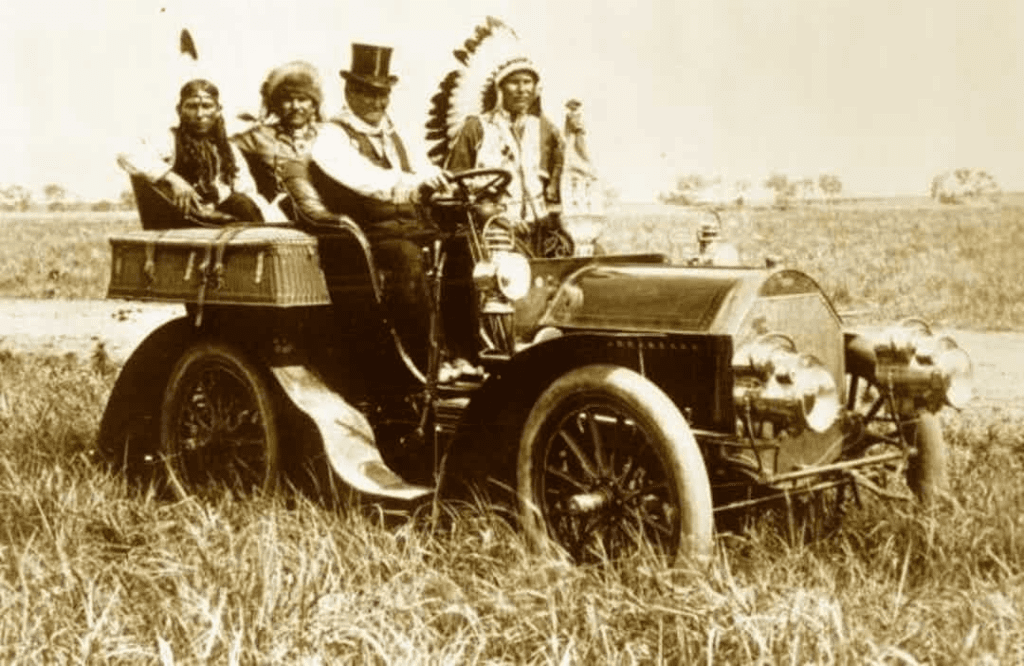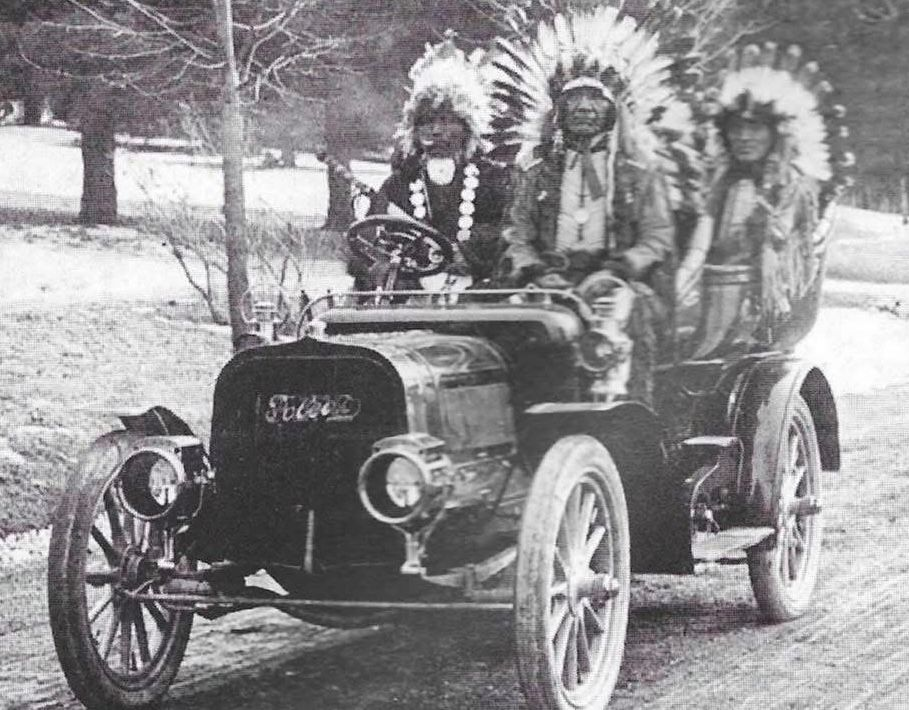In 1915, a photograph was taken that captured far more than just a man in a car. It froze a powerful moment in time one where centuries of Native American tradition crossed paths with the rapid rise of modern technology. Behind the wheel of an early automobile sat Chief Iron Tail, a respected Oglala Lakota leader, staring straight ahead not just into the camera, but into a new century.
The image still resonates today. Chief Iron Tail in that car wasn’t just a novelty he was a symbol. A living bridge between heritage and innovation, between a people deeply rooted in ancestral lands and a world that was rapidly changing around them.

Who Was Chief Iron Tail?
Chief Iron Tail was no ordinary man. Born around 1842, he rose to prominence as a revered Oglala Lakota leader and warrior. He fought alongside legendary figures like Sitting Bull and Crazy Horse during the era of resistance to U.S. westward expansion. But his legacy wasn’t confined to battlefields.

In the early 20th century, Iron Tail became a celebrated figure through his association with Buffalo Bill’s Wild West show. Touring across the U.S. and Europe, he introduced audiences to Native traditions dances, dress, and storytelling with strength and dignity. For many Americans, Iron Tail was their first face-to-face encounter with Indigenous culture.
And most notably, his profile became the model for the Indian Head nickel, minted from 1913 to 1938. His face, immortalized in metal, became an American icon.
Video:
Iron Tail, Oglala Lakota Chief- Plain Indians Sign Language
The 1915 Photograph: More Than a Moment
The image of Iron Tail behind the wheel of a car was more than just a curious photo op. It was symbolic of a cultural collision that Native Americans had been navigating for decades.
By 1915, the automobile represented cutting-edge progress and a new kind of freedom one defined by speed, machinery, and movement across long distances. For Iron Tail, who came from a culture that valued the horse as a sacred and essential partner in life, the act of driving an automobile was both ironic and poetic.
It didn’t mean surrendering tradition. It meant adapting. Surviving. Continuing.

Tradition Meets Transformation
The early 20th century was a painful period for many Indigenous communities. Forced assimilation policies, boarding schools, and loss of ancestral lands left deep scars. But despite these challenges, Native leaders like Iron Tail found ways to assert identity and agency within modern America.
To see a Lakota chief behind the wheel of a car was to see a people refusing to be erased. It was a declaration: “We are still here. We see the future and we are part of it.”
Video:
Cody and Iron Tail Sign Language
Iron Tail didn’t just sit in that driver’s seat for show. He represented motion, direction, and leadership qualities he’d demonstrated throughout his life. The car may have been modern, but the spirit behind the wheel was ancient and enduring.
A Timeless Image with Ongoing Relevance
Today, over a century later, the photo of Chief Iron Tail in that automobile serves as a touchstone. It reminds us of the resilience of Native communities and the ways they’ve continually reshaped, resisted, and reimagined their role in a changing world.
As conversations about Indigenous rights, representation, and history continue, Chief Iron Tail’s story remains vital. His presence in both the traditional and modern worlds challenges us to reconsider what progress looks like and who defines it.
He may have passed in 1916, but Chief Iron Tail still drives through history, guiding us with quiet strength and fierce dignity.



